By Rick VanSickle
If you want to talk about perseverance in the Ontario wine industry, look no further than Mauro Scarsellone, co-owner of the Ridgepoint Winery on Niagara’s Twenty Mile Bench.
How else do you explain growing a grape you love dearly and is rooted in your Italian heritage, but has almost no history in Niagara and fails nearly as often as it succeeds in a climate that’s not at all friendly to persnickety grapes? How in the world can you account for making a wine that spends 70 months in what starts out to be new oak and eventually drains the life out of every barrel it meets?
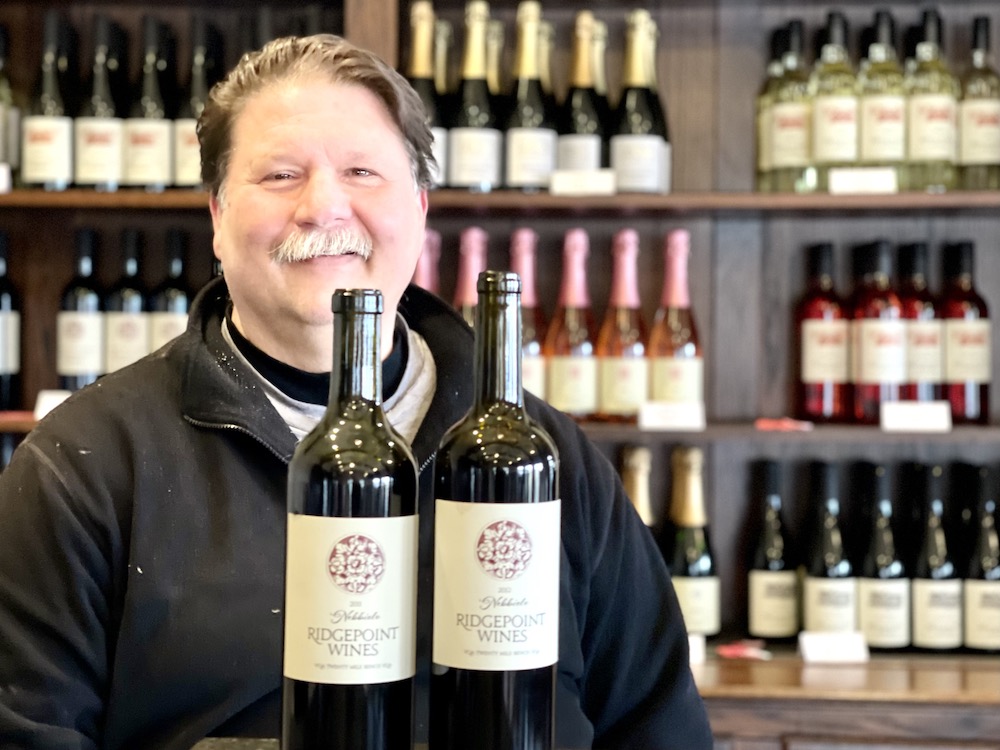
Scarsellone, above, has been touting Nebbiolo, the tricky Pinot Noir-like superstar made famous in the Italian vineyards of Barolo, since he began growing it in 1999 after receiving cuttings from pioneering grape grower Gunther Funk. It was the first Nebbiolo wine made in Niagara (maybe Canada?) at the time. The Bruno Moos’ owned Alvento winery made a stellar one for a few years, but it’s believed those vines no longer exist under new ownership. The only other winery to grow and make wines from Nebbiolo is Muscedere in Lake Erie North Shore, which I have not tasted.
Scarsellone, who co-owns Ridgepoint with his sister Anna Gottardo, told Wines in Niagara after a visit last week, “these are the wines that we fell in love with.” As the children of Italian immigrants, who left their country to pursue greener pastures in the New World and to get away from the hardships of living off the land, it was in their DNA to bring a little of their heritage to the winery they founded in Vineland after successful careers prior to the wine business.
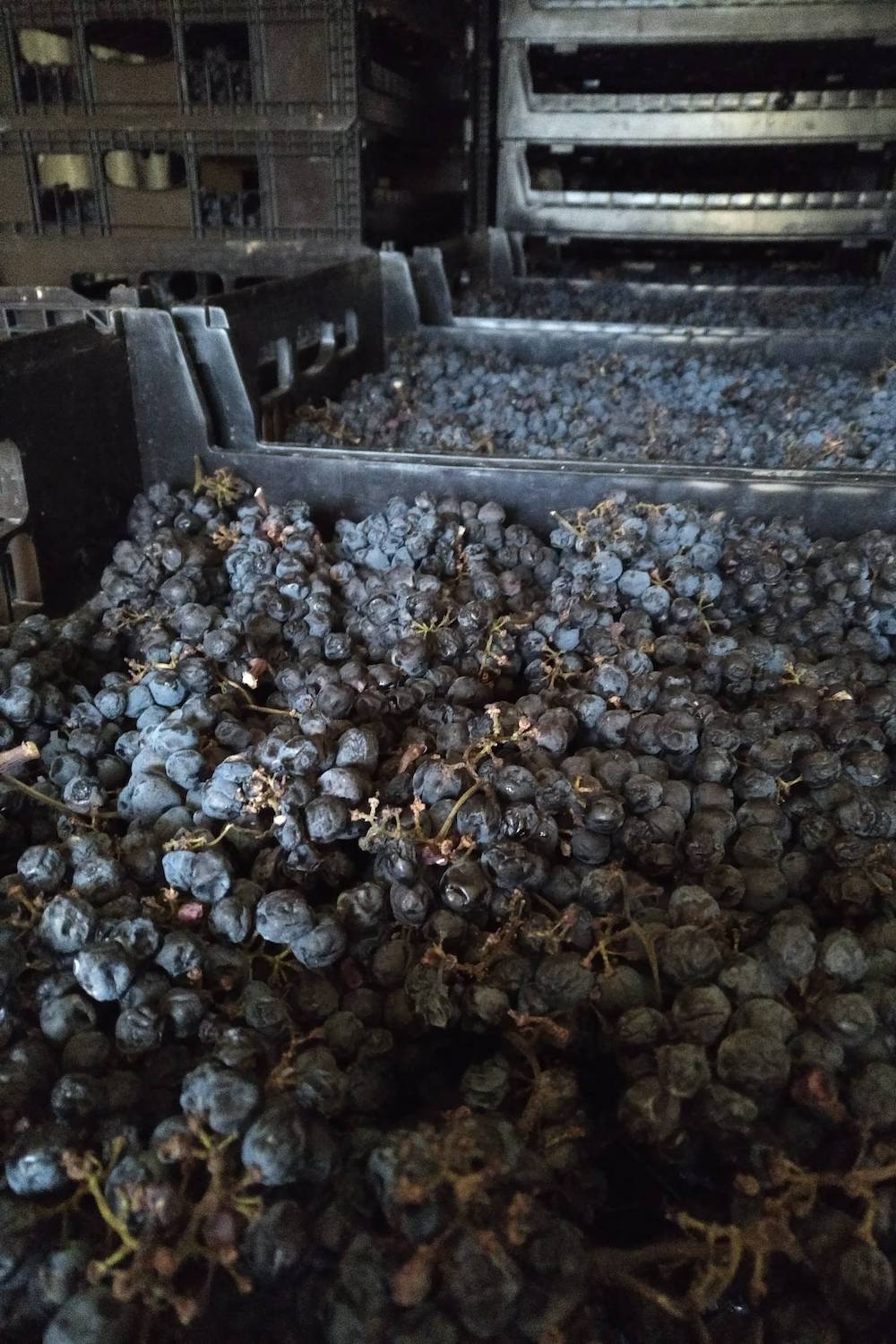
They purchased their property in 1995, a 20-acre piece of land atop the Niagara Escarpment. “We were drawn to our property because of the similarity to the landscape our parents had loved in Italy, and because of the old adage that the best grapes are grown on hillsides rather than in valleys and flatlands.”
From the beginning of their journey in Niagara, Scarsellone was drawn by the challenge of bringing in new red grape varieties, especially of the Italian kind, to the region to try. “With a lot of determination, we were able to secure new varieties such as Nebbiolo and Corvina.” More recently, Glera was sourced from a grower in Stoney Creek to produce a Prosecco style sparkling wine, and Scarsellone plans to plant it in his vineyard beginning next spring. The backbone of the production at Ridgepoint is the appassimento style wines, another nod to his Italian roots, with grapes dried in a custom-made shipping container for the various reds from Ripasso, to partial and 100% appassimento wines.
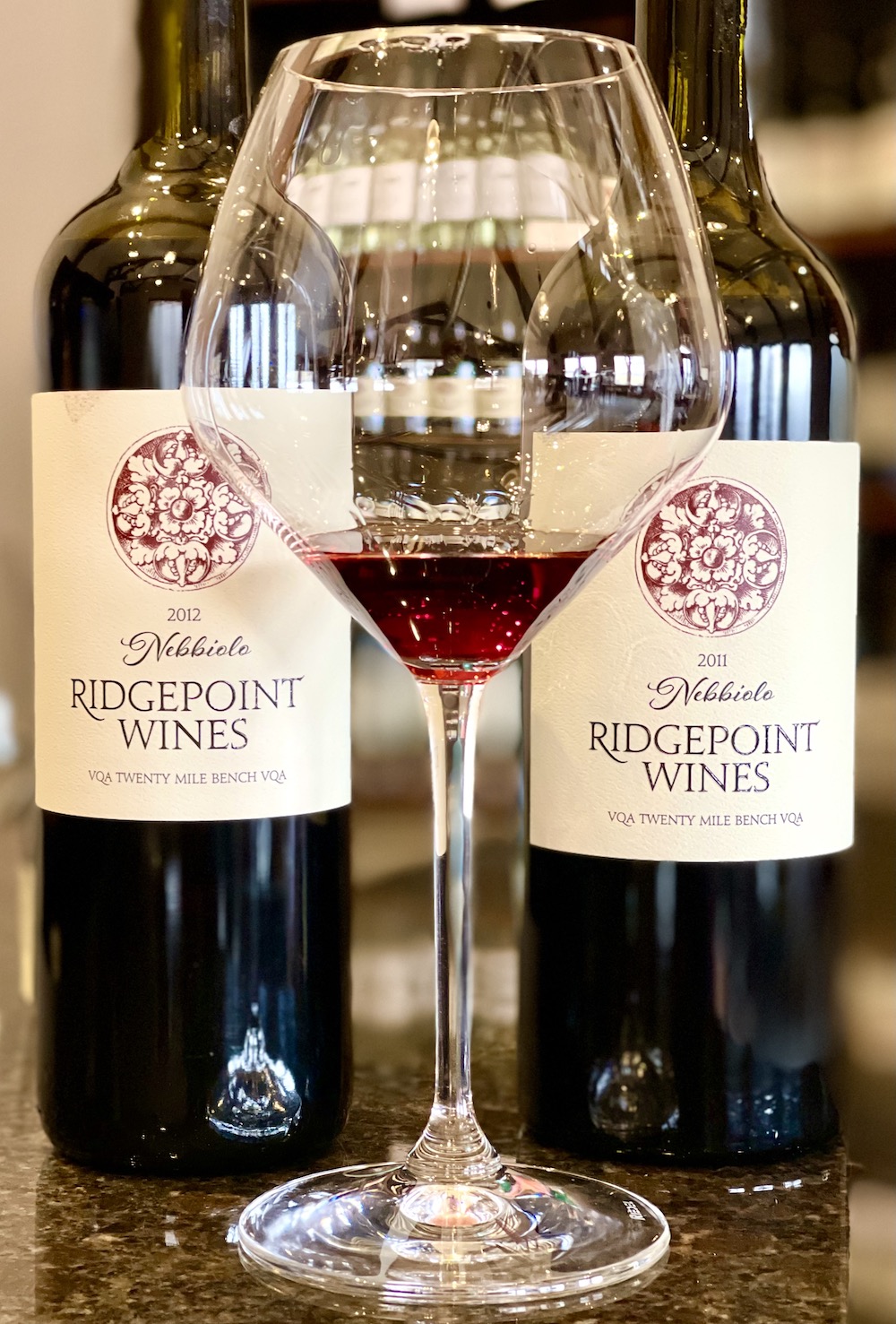
“Our desire to produce wines that remind us of our heritage has also led us to practice Old World wine techniques such as appassimento and ripasso winemaking.”
There is no looking back for Scarsellone, especially with Nebbiolo, which he calls “Pinot Noir on steroids.”
Cold weather is the biggest enemy for Nebbiolo grapes, which needs a lot of hang time to ripen fully. While the vines have proven they can survive the cold, it is challenging to produce a reliable Nebbiolo every year in the Niagara region. No Nebbiolo was made in 2014-15, 2018-19 and 2022. Scarsellone thins clusters to as few as one or two per shoot. During veraison, if he sees clusters that have not significantly started to ripen, he will drop the fruit to the ground, reducing the yield to as little as 1.5 tonnes per acre. You can understand why the wines are priced at $75 a bottle, but worth every penny in my book after tasting two vintages back-to-back at the winery last week and one other previous vintage years ago.
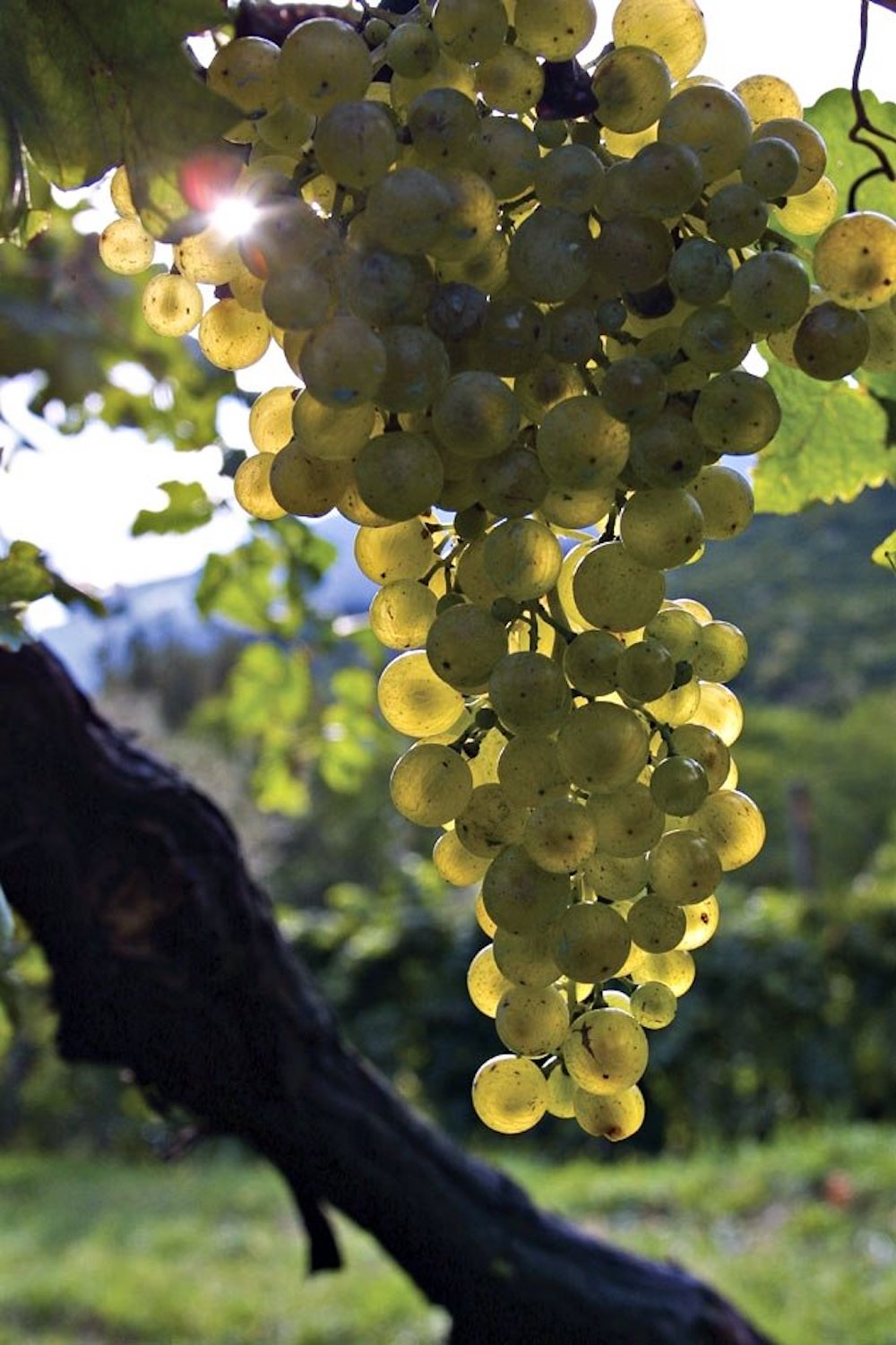
Scarsellone knows full well not to put all his grapes in one basket. While the Italian style wines are his specialities, he still makes the bulk of his wines from estate grown tried and true varieties that thrive on the Twenty Mile Bench — Chardonnay, Riesling, and Pinot Noir along with the red Bordeaux grapes of Cabernet Sauvignon, Merlot, and Cabernet Franc. The wines are all crafted by Ramsey Khairallah, also the winemaker at 180 Estate Winery.
Here’s what I liked from my recent tasting:
The White Wines
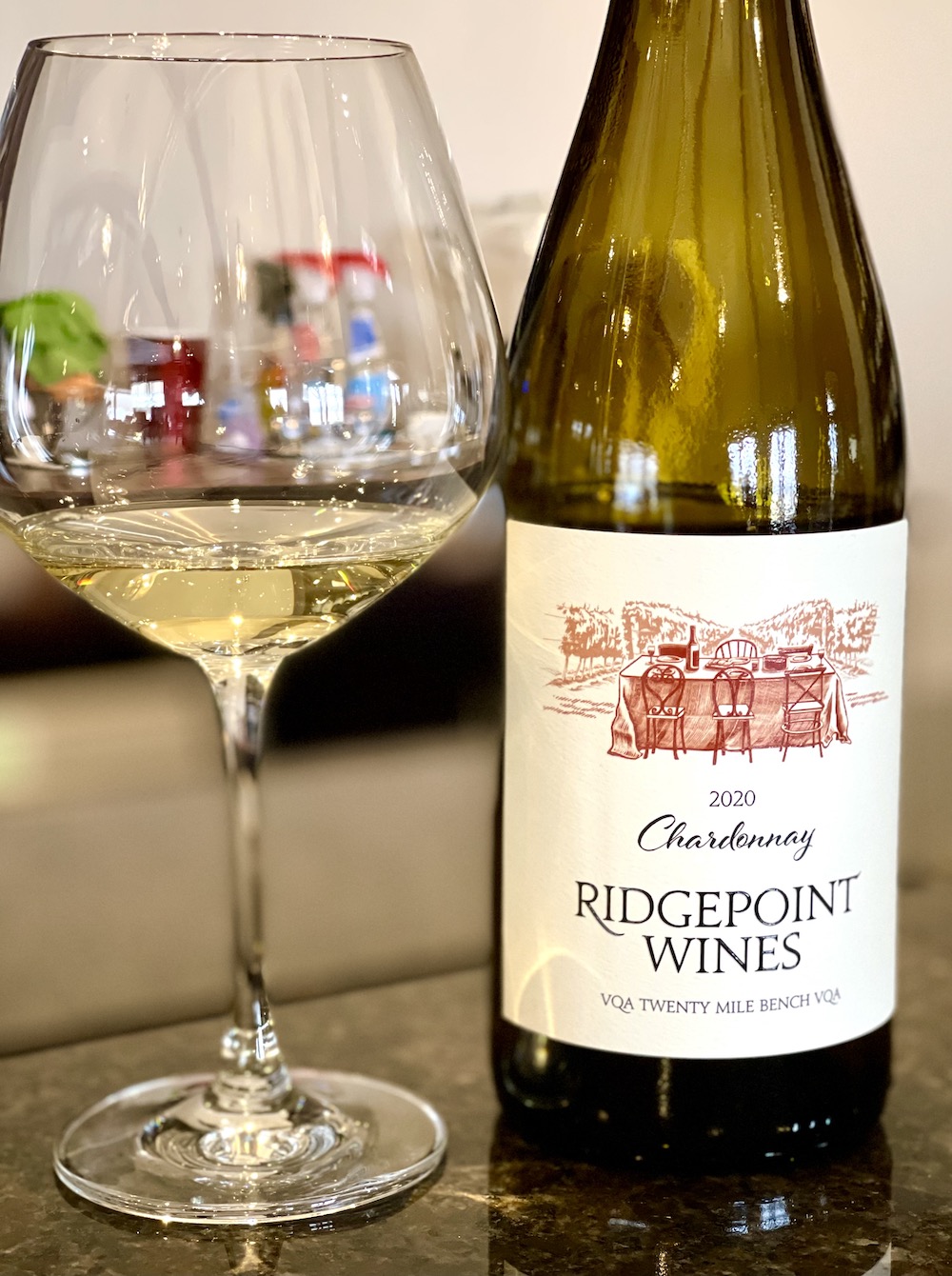
Ridgepoint Chardonnay 2020 ($25, 90 points) — Despite the warm vintage, this old-vine Chardonnay shows poise and restraint with a nose of fresh pear, bright apple, lemon accents, lovely saline minerality and light toasted oak notes. It’s quite minerally on the palate with flinty notes, pear/quince fruit, lemon freshness, integrated spice and a zesty, lifted finish. Good value Chard.
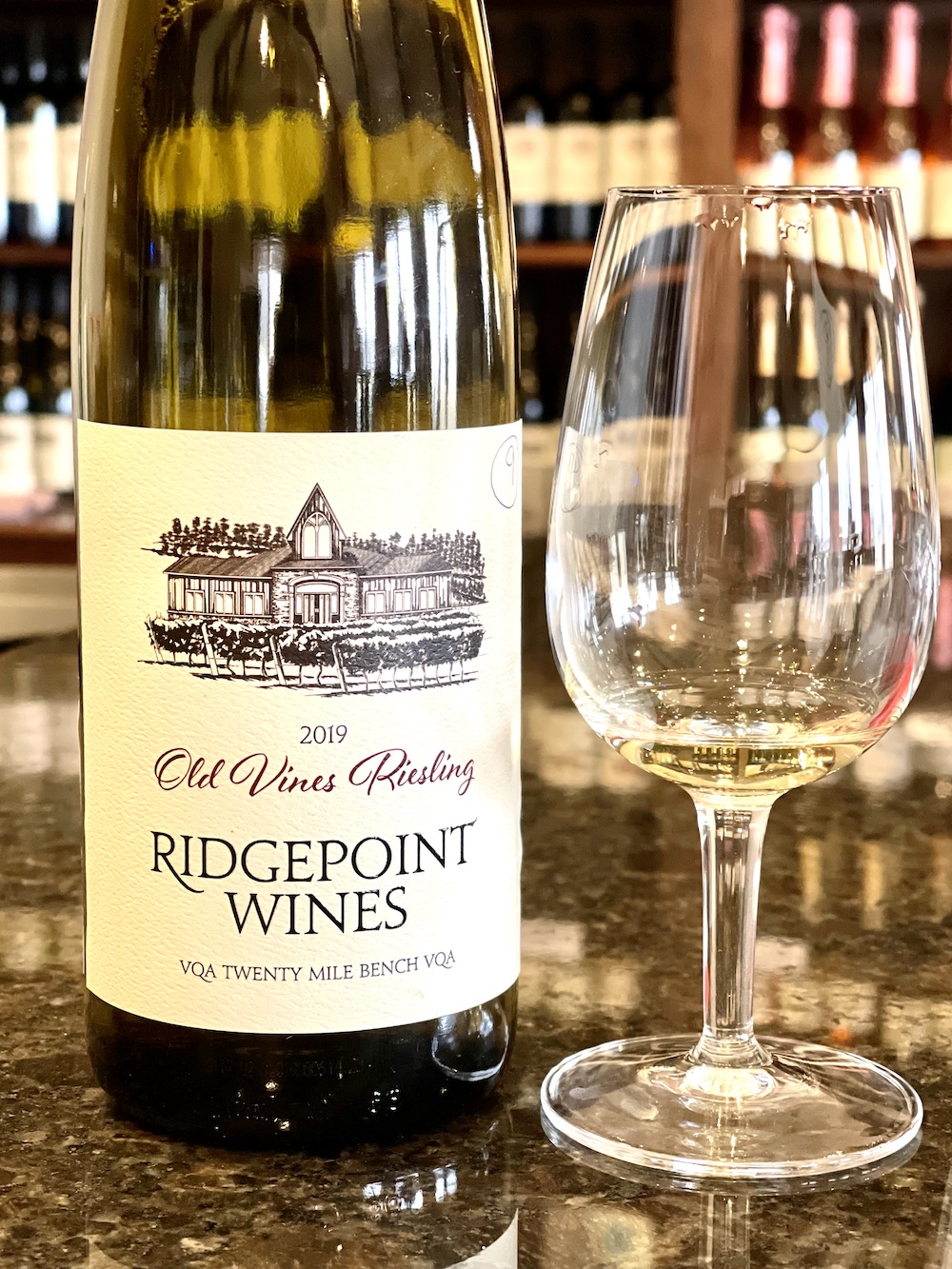
Ridgepoint Old Vines Riesling 2019 ($20, 89 points) — The vines for this Riesling are 20+ years old. It has an interesting nose of chiffon, Meyer lemon, nectarine, white flowers, and apples. There is sweet-tart tension on the palate with plenty of juicy orchard fruits, citrus, mineral zip, and tingly acidity to balance out the subtle sweetness. It’s finished with a modest 11% abv.
The Bubbles
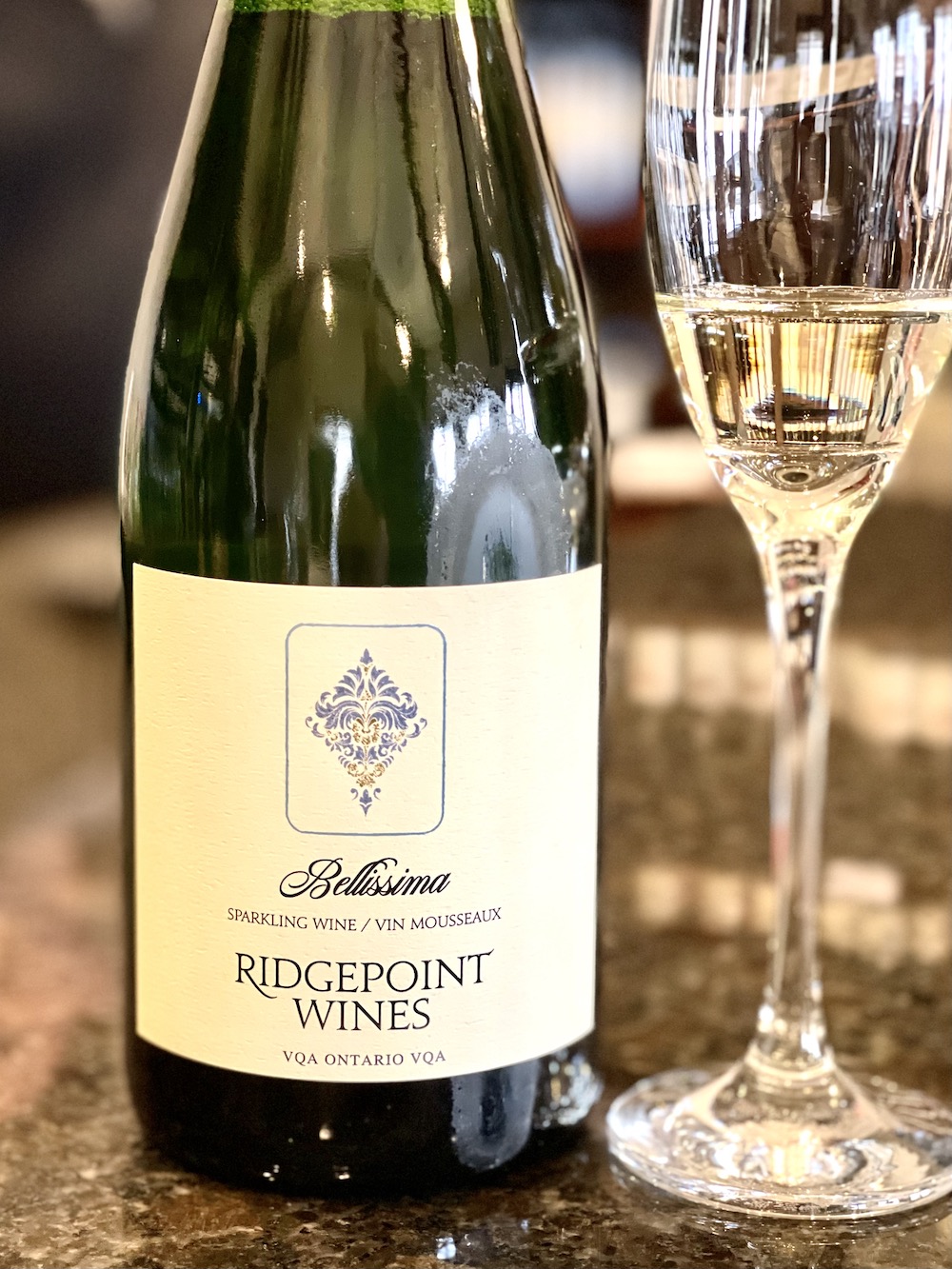
Ridgepoint Bellissima 2021 ($25, 91 points) — Ridgepoint’s Bellissima, Italian for beautiful, is a sparkling wine made from Glera grapes (made famous by the sparkling wines of Prosecco) and believed to be the only Glera-based wine made in Canada. Scarsellone first sourced the Glera grapes from Zanesco Vineyards in Stoney Creek, which had been growing the grape for years. Ridgepoint plans on planting its own Glera this spring. What a lovely surprise that out-performs many of the Proseccos imported into the LCBO. Such a highly aromatic nose of green apple, white flowers, and bright citrus. It’s vibrant and nicely effervescent on the palate with a balanced melange of citrus, lime peel and green apple in a fresh, lifted style with a pinch of sweetness for everyday enjoyment. 12% abv.
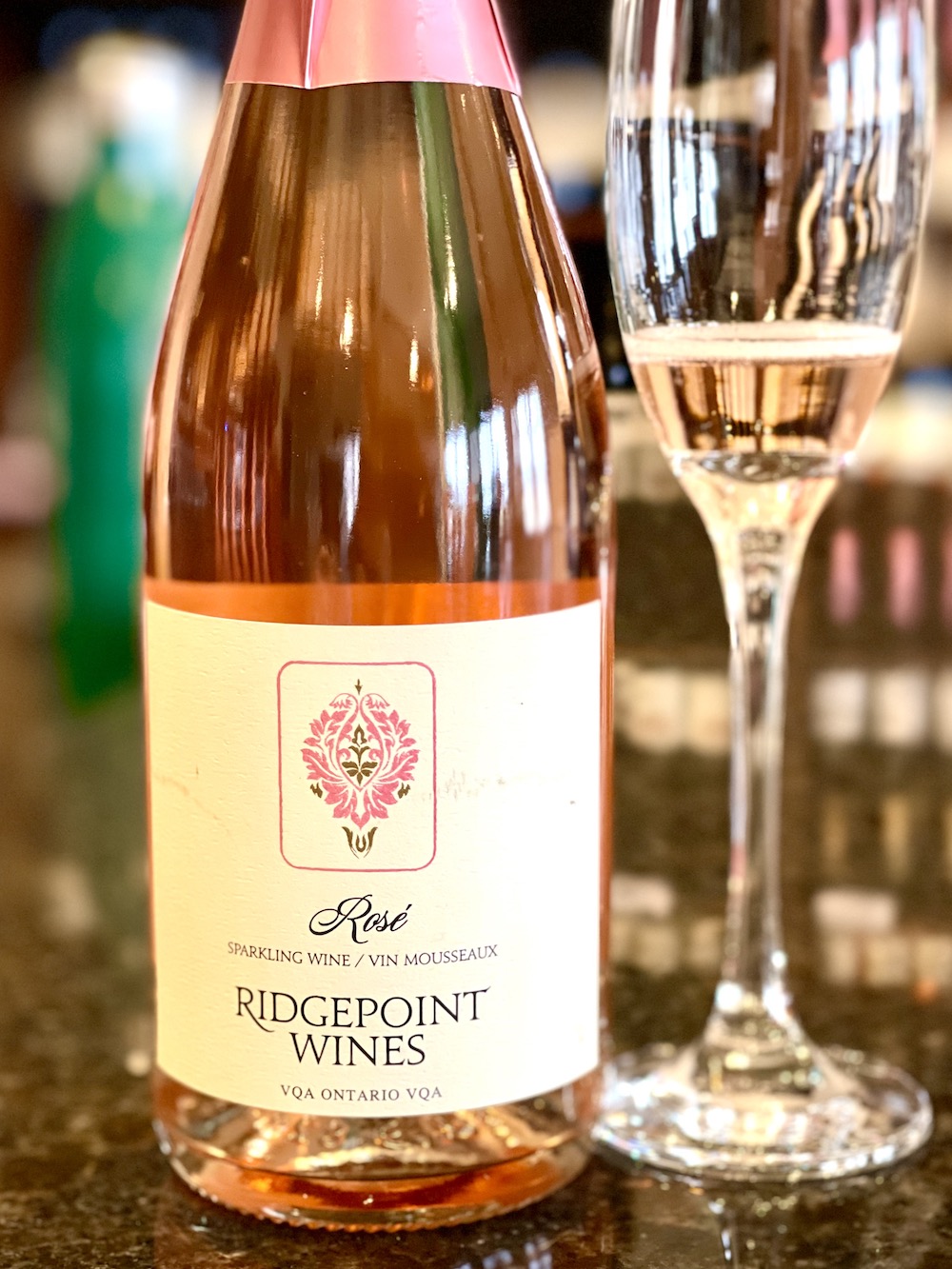
Ridgepoint Frizzy 2019 ($18, 88 points) — Continuing with the Italian-style sparkling portolio — “we want our sparkling wines to by fun,” says Scarsellone — we turn to Frizzy, short of Frizzante, a sweet Italian style of sparkling wine made from Muscat grapes using the charmat method. The nose is rife with summer strawberries, wild raspberries, violets, and a touch of citrus. There is a touch of sweetness on the palate, but it’s rounded out by ripe red berries, gentle effervescence, and a lifted finish. A respectable 9% abv.
The Red Wines
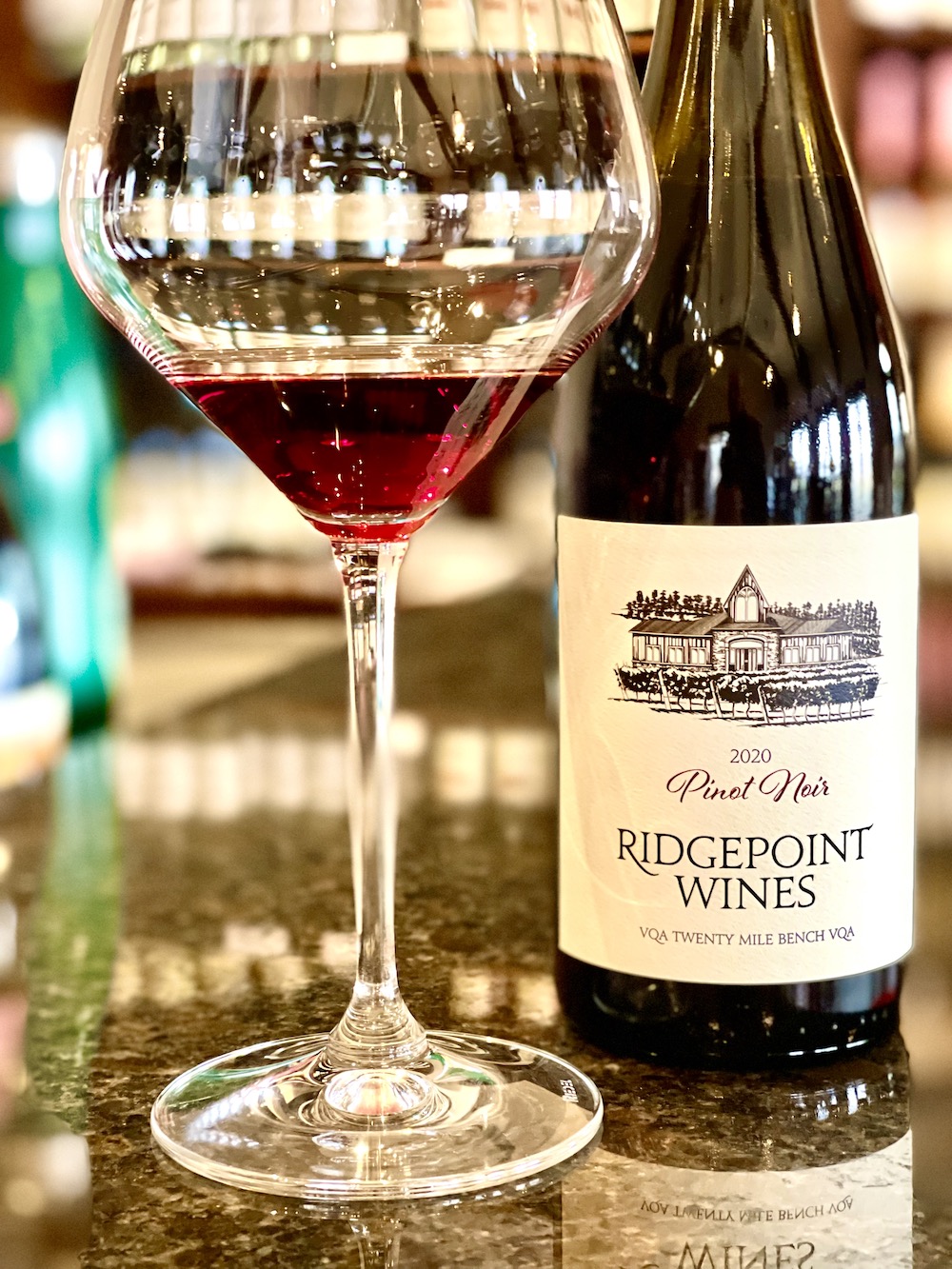
Ridgepoint Pinot Noir 2020 ($30, 90 points) — The 2020 estate Pinot is sourced from the oldest block planted in 1997. It’s aged in 100% American oak, which you can sense immediately on the nose, to go with forest floor, beet root, wild raspberries, anise, and that spicy bite. It has a silky texture on the palate leading to a big, juicy Pinot with wild red and dark berries, anise, rich spice notes and all nicely textured through a bright, lifted finish.
Ridgepoint Pinot Noir Reserve 2020 (not released yet, will be in the $40 range, and not quite finished when tasted so no score) — The difference in the reserve and regular Pinot above is in the oak treatment. The reserve is aged in 100% French barrels (mostly used oak) for 24 months. This shows much more elegance and typicity for a Twenty Mile Bench Pinot Noir with a gorgeous, red-fruited nose, subtle earthy notes, and elegant spice. It’s rich, yet poised on the palate, with silky tannins, integrated red berries, earthy/savoury notes, and a long, lifted, and vibrant finish. A beauty.
Note: Scarsellone mentioned to me that he was considering pulling up his old vine Pinot Noir from his property because it’s a bit of a hard sell among his bigger red wines. My thoughts: You have beautiful old vine Pinot Noir on the Twenty Mile Bench that many others would kill for. Be patient with consumers and stay the course.
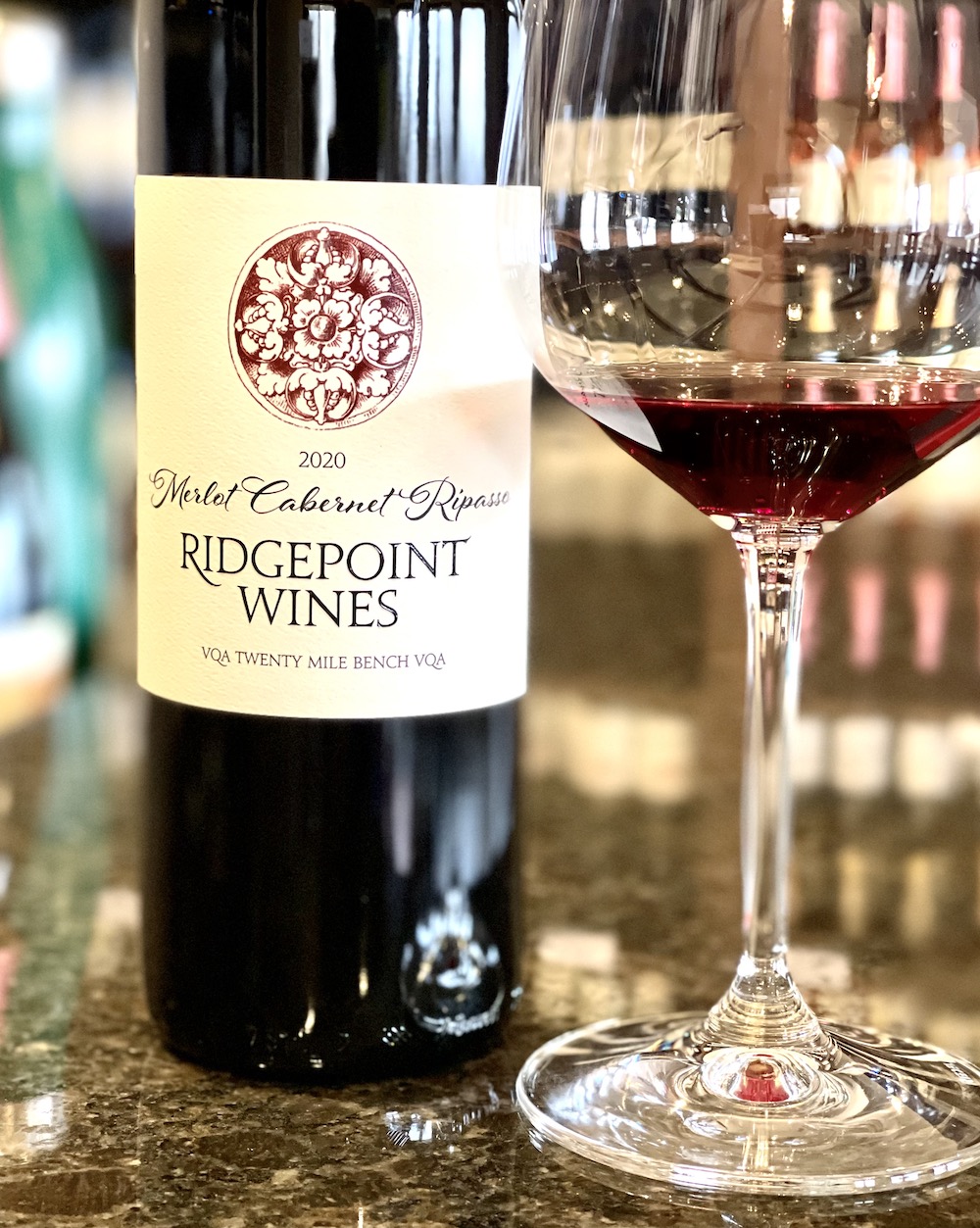
Ridgepoint Merlot Cabernet Ripasso 2020 ($23, 89 points) — This ripasso style red was made from Merlot (89%) and Cabernet Franc (11%) grapes using the Italian tradition of aging wine on the pressed grape skins from wine made using the appassimento method and then aged in oak barrels for 12 months. It has lovely aromatics of plums, black cherries, black currants, and subtle spice notes. It’s quite smooth and drinkable now with rich, red berries, juicy plums, and cassis. It’s an enjoyable, affordable everyday red.
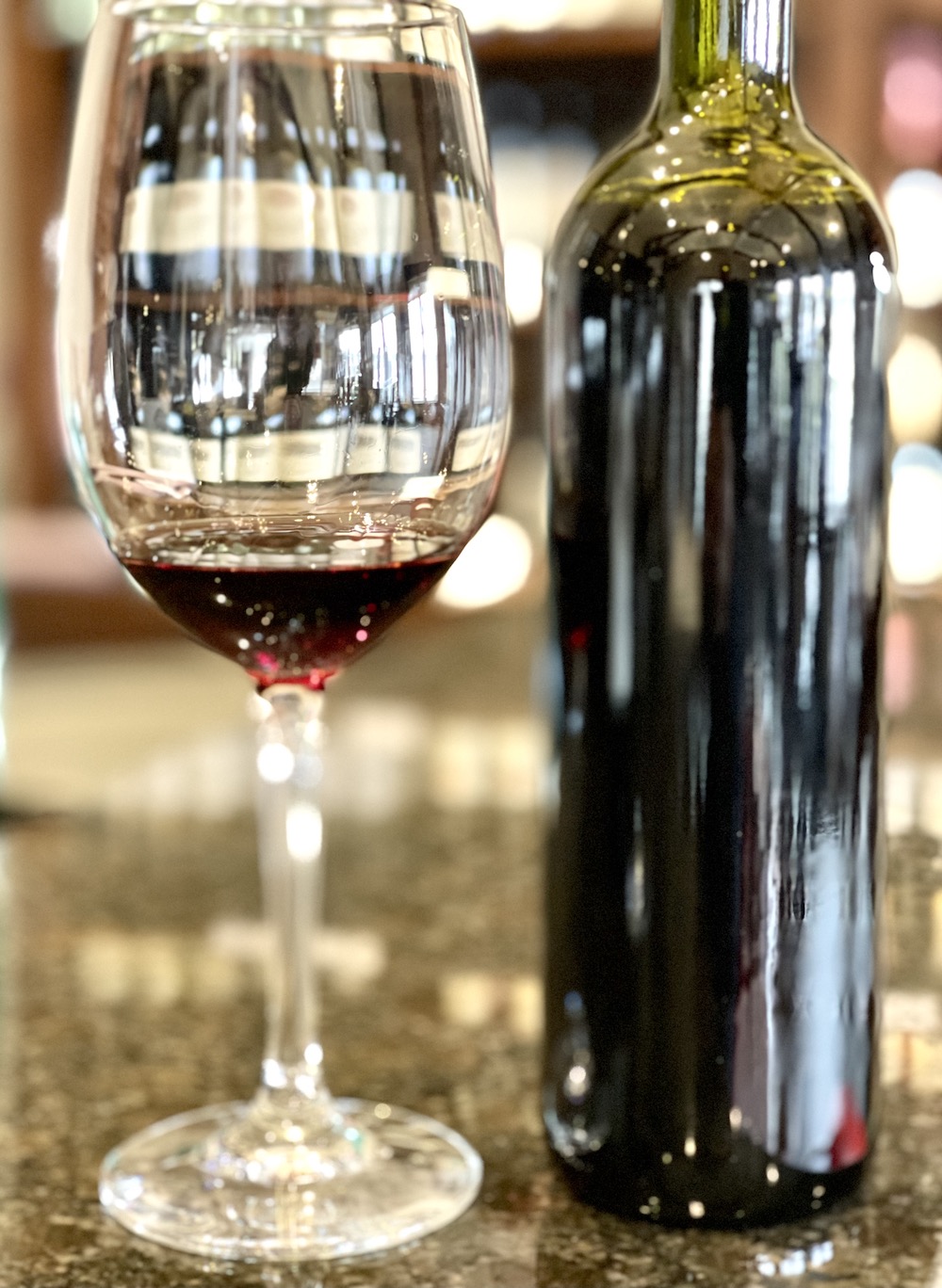
Ridgepoint Cabernet Merlot Corvina 2019 (unlabelled, released in a couple of months, in the $30-$40 range, 92 points) — This partial appassimento style wine uses 10% of the rarely planted Italian grape Corvina, which I believe is the only winery other than Pillitteri with plantings in Ontario. That 10% is dried to give this wine more body and structure. It’s tightly wound now but still shows an attractive, pretty nose with dark berries, integrated spice notes, cassis, leather, and blueberries with subtle earthy/savoury notes. It’s more complex and layered on the palate with firm tannins and structure to go with ripe dark berries, plums, leather, spice and a long finish with finesse and flare.
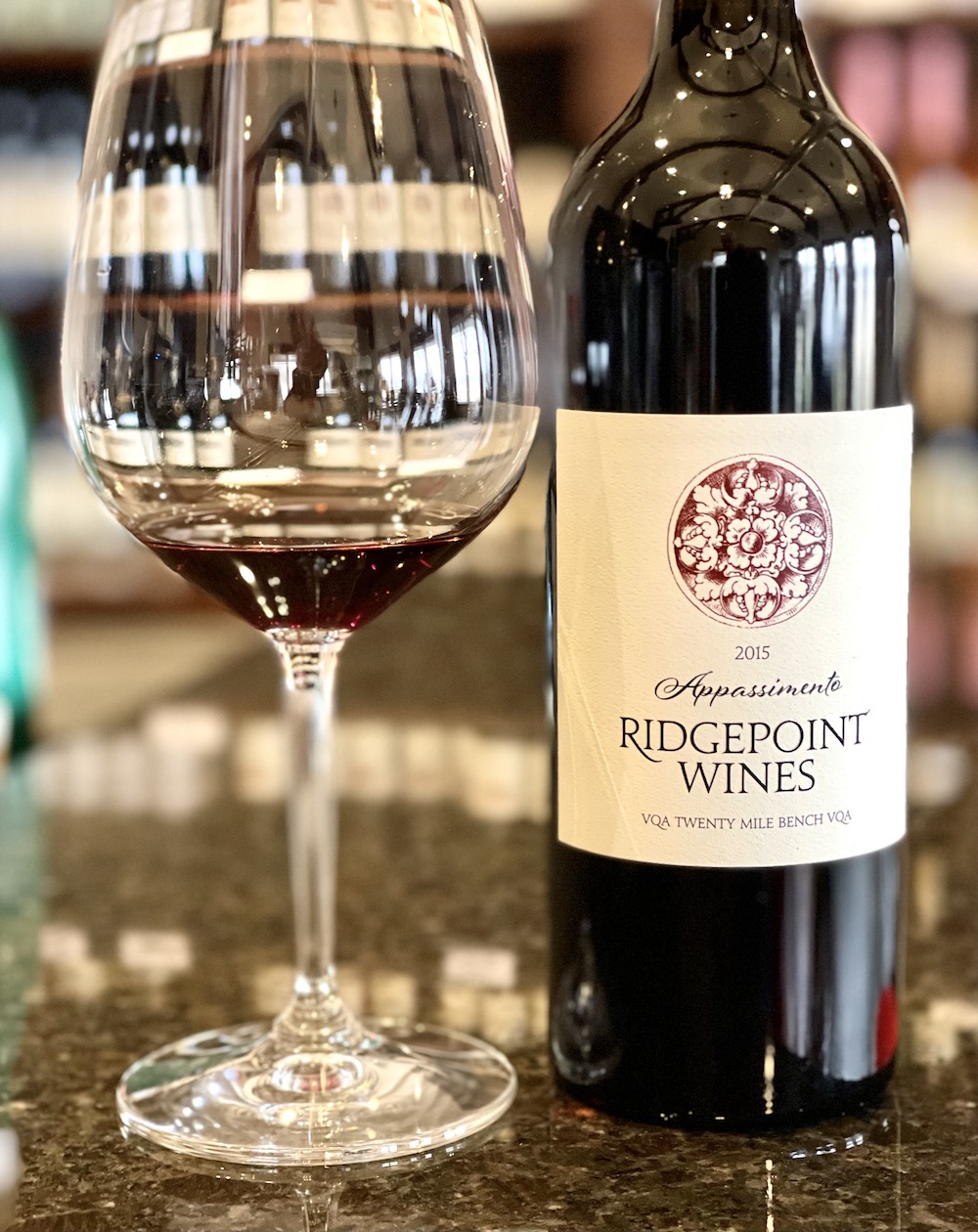
Ridgepoint Cabernet Appassimento 2015 ($60, 92 points) — This wine was made from Cabernet and Merlot grapes, which were hand harvested and naturally dried for 60 days prior to being fermented. It was barrel aged for 48 months and has a juicy nose of dark plums, dried blackberries, compoted black currants, thick spice notes, subtle raisiny notes and earthy/savoury accents. It’s no doubt a big, full-bodied red with weight, power and ripe tannins that highlight the layers of red and dark compoted berries, cocoa, rich spices, and earthy notes with plenty of acidity on the back end to somewhat temper the 16.9% abv. Yes, 16.9%. As Scarsellone says: “You drink less, but you drink better!”
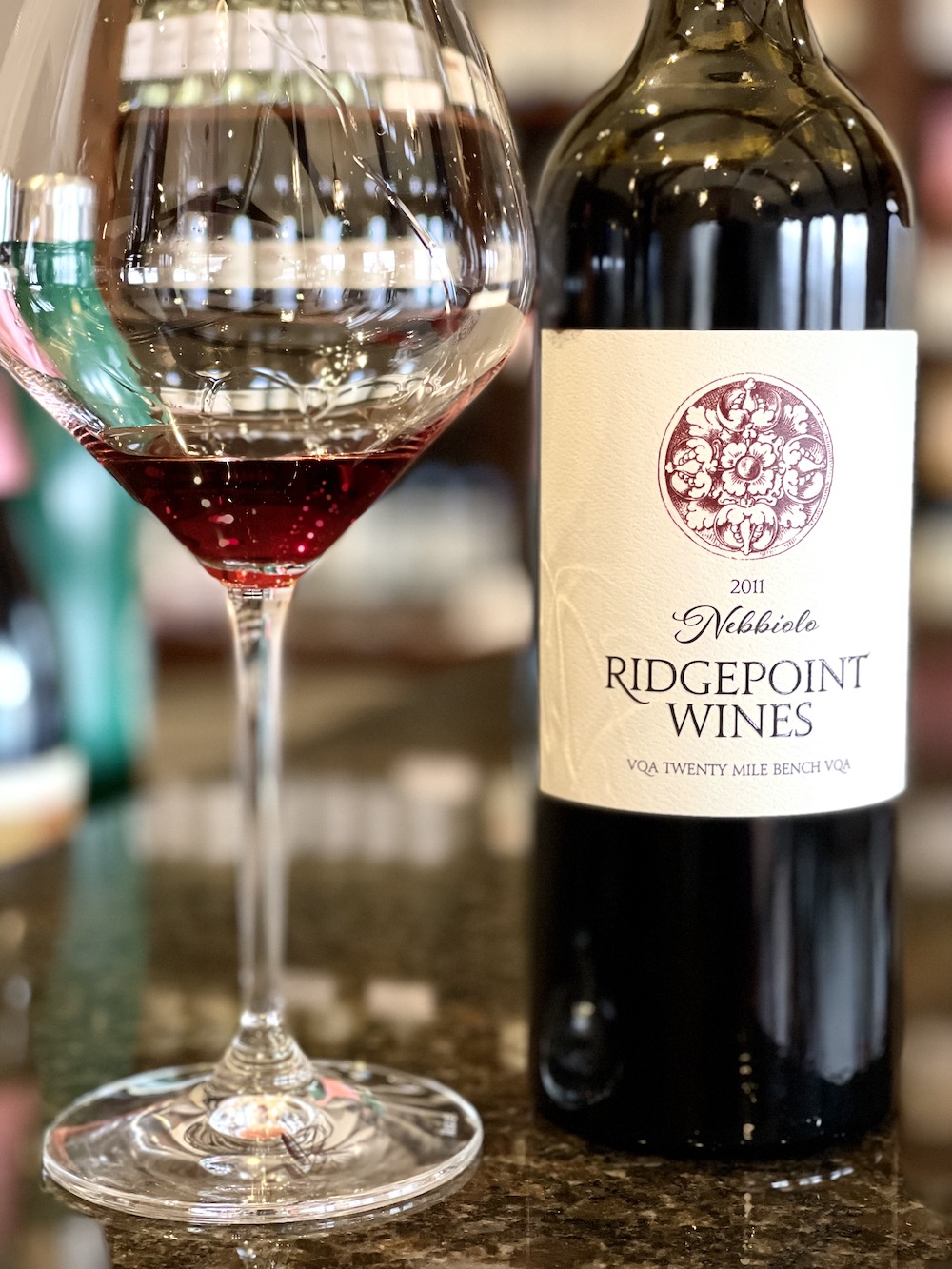
Ridgepoint Nebbiolo 2011 ($75, almost sold out, 93 points) — The following two Nebbiolos surprised me — in a very good way — when I tasted them with Scarsellone. Such a rarity, not only for the variety, but also because the 2011 and 2012 vintages are the current vintages. Who else is releasing 10+ year old wines into the market on a regular basis? As explained in the intro above, this gorgeous Nebbiolo is Italian aristocracy made famous in the vineyards of Barolo. It is hard to duplicate outside of that hallowed ground. It is hard to grow, hard to make and takes a very long time to come around into the beautiful thing it can be. These two wines have achieved greatness, in my opinion, and follow very closely in the footsteps of Barolo or at the very least Barbaresco. 2001 was the first vintage made at the estate and several vintages were skipped due to poor vintages. This wine and the 2012 one below spent 70 months in oak. As Scarsellone says: “We’re doing the aging for you.” All Barolos, regardless of where they come from, need a great deal of time to come around and soften the aggressive tannins. The nose on this beauty is highly perfumed with delicate rose petals, white pepper, dark chocolate notes, wild red berries, stylish oak spices, classic tar accents, eucalyptus, and subtle forest floor. It’s just wonderful on the palate with a still firm tannic structure and a rich, layered, and complex profile of plums, cherry/kirsch, raspberry preserves, minty herbs, dark chocolate, forest berries, lovely fine oak spice, black truffles and a layered, echoing finish with rousing acidity for finesse. It still has room to age beautifully over the next 10 years. To quote a certain American president, “and that’s no joke.” 14.5% abv.
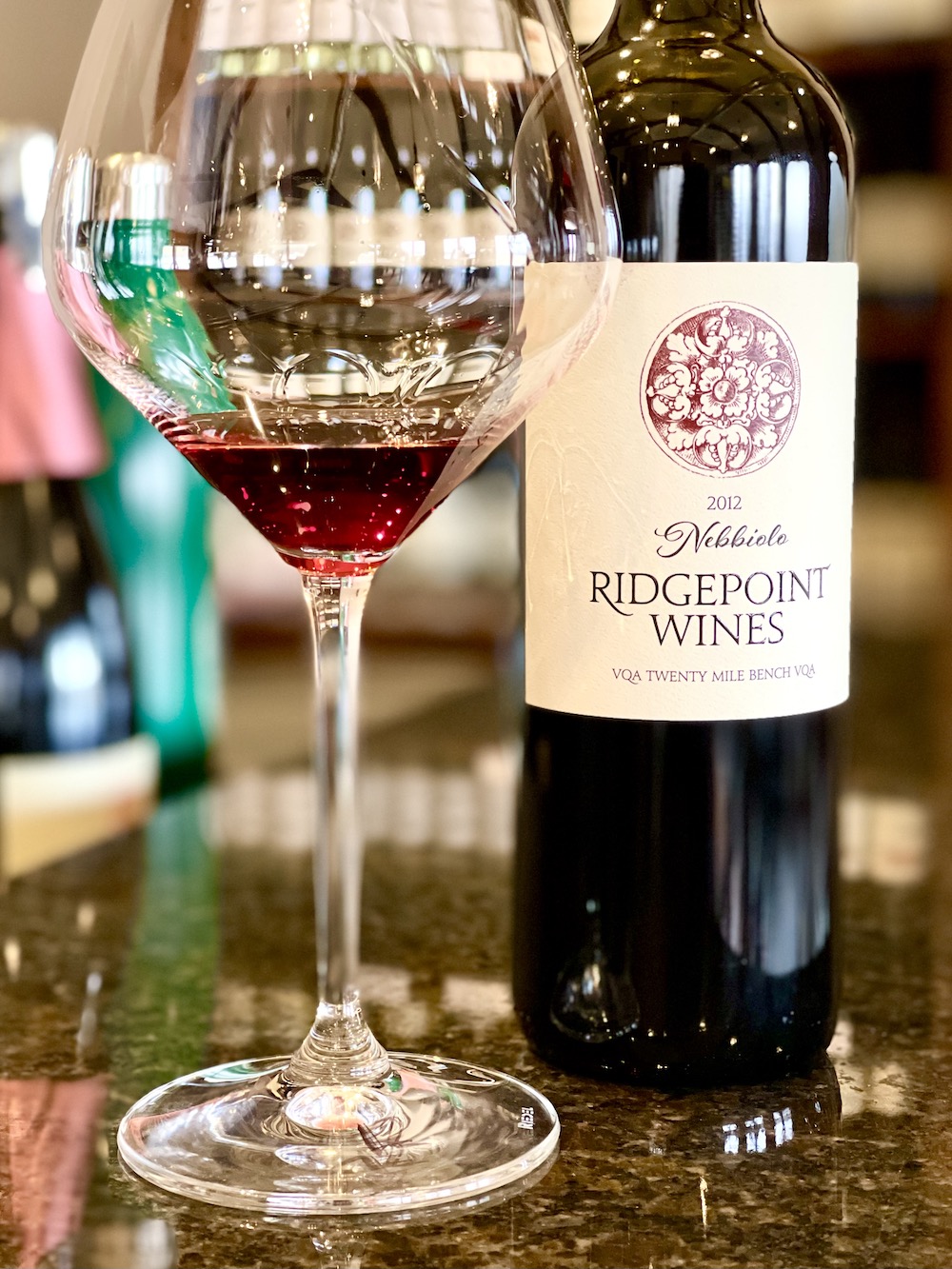
Ridgepoint Nebbiolo 2012 ($75, 94 points) — The grapes for the 2012 version of this unique wine were hand-picked, sorted, and aged for 70 months in French oak barrels. It’s tighter than the 2011 but follows in its footsteps with a highly aromatic nose of dark and red berries, tar, leather, jammy red berries, complex and finely spiced nuances. It’s a mouthful on the palate, but more poised and elegant despite the higher abv of 15.5%. The profile is rich and savoury with ripe, dried red berries, classic truffles and minty herbs that comes at you in layers and is constantly revealing more of itself as you sip. The end note is lifted and lasting. A beautiful wine and rare treat from Niagara that will evolve over the next decade.






Comment here